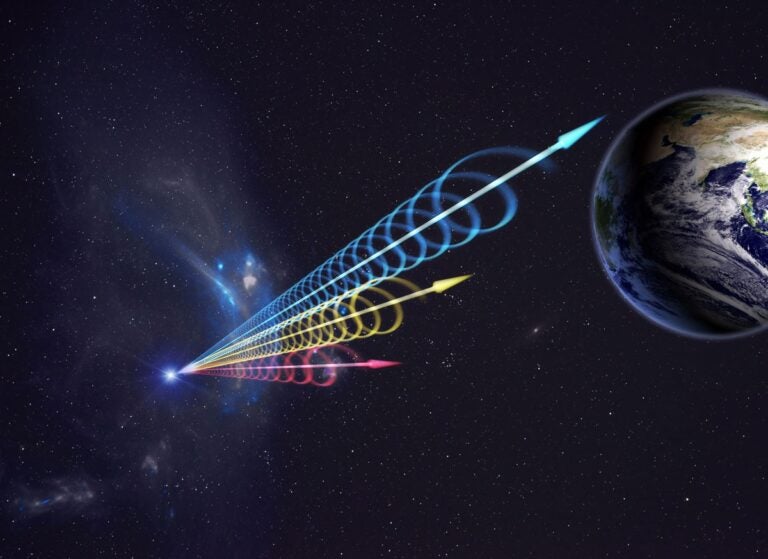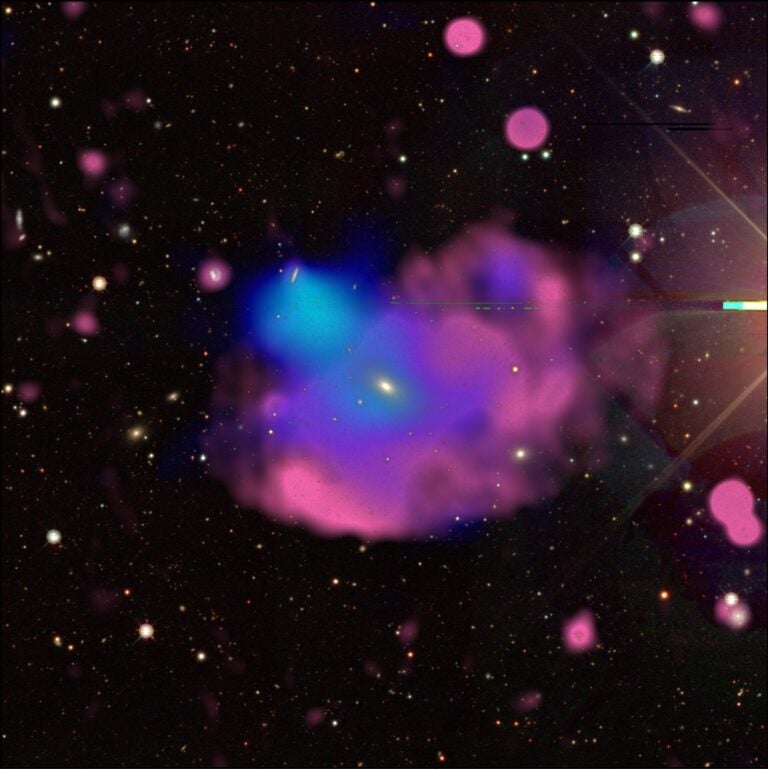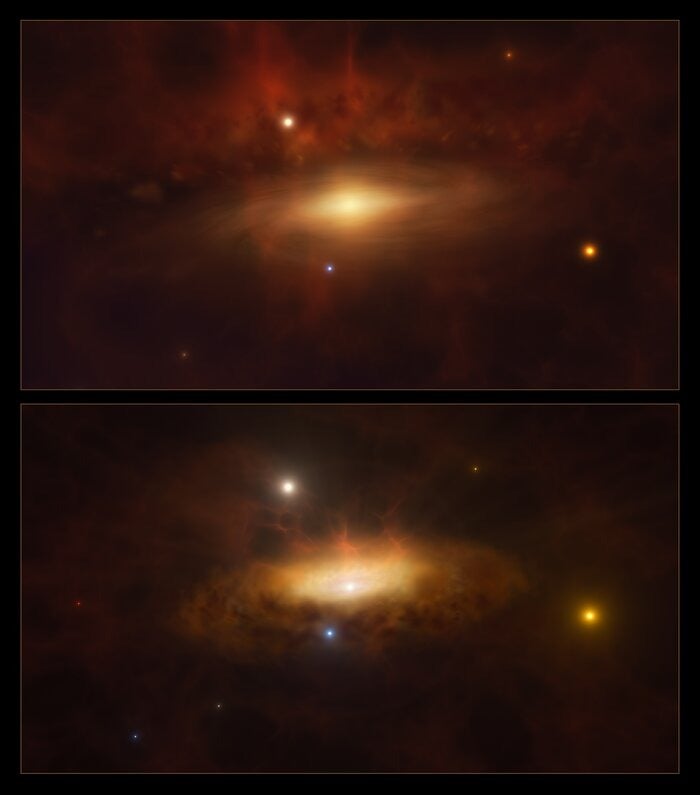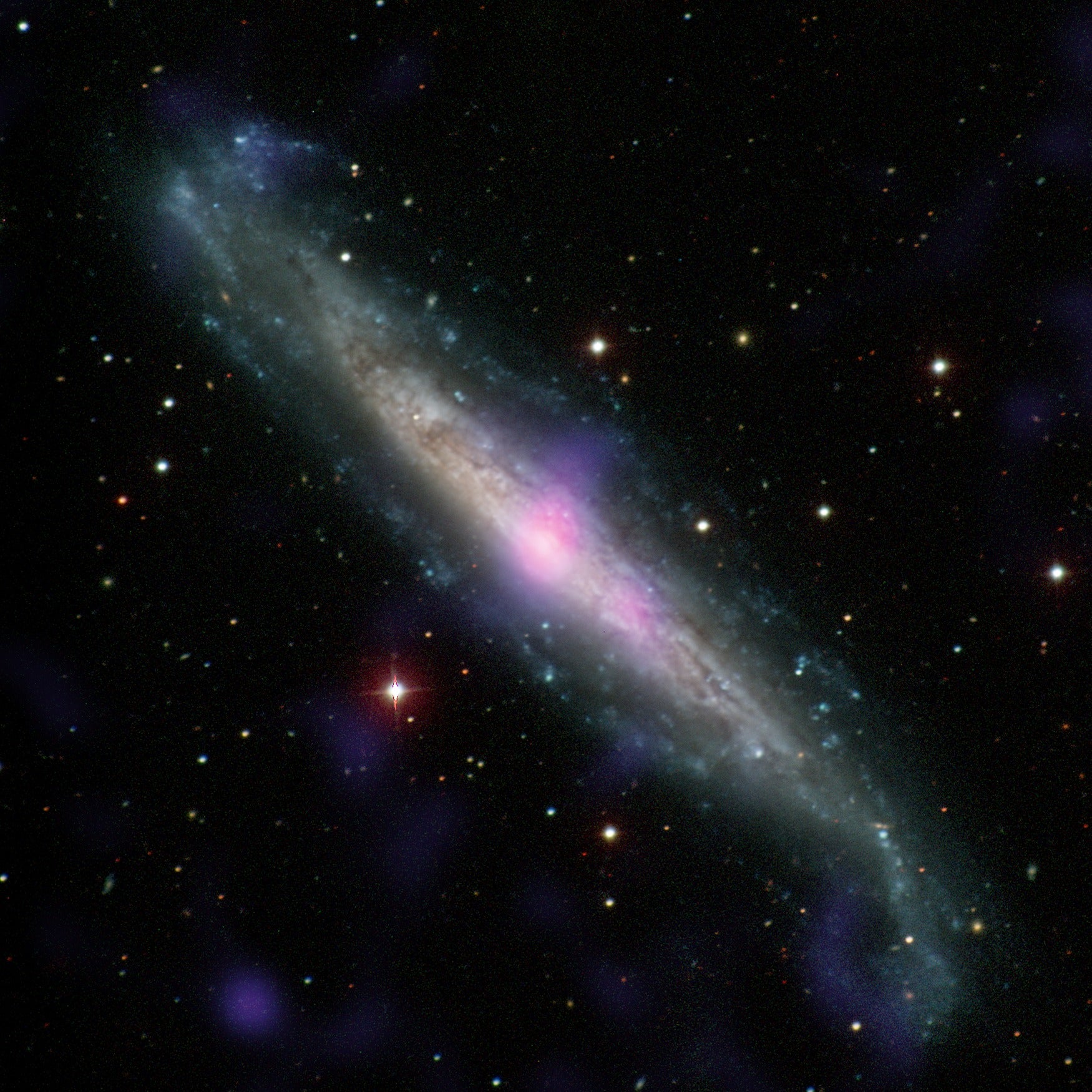
Over the past several decades, astronomers have discovered that nearly all large galaxies host a central supermassive black hole millions or billions of times the mass of the Sun. And despite making up only a tiny fraction of the mass of the galaxy that houses it, these black holes and their galactic hosts are closely linked, growing and evolving together.
Naturally, one key question that could better illuminate this relationship is how such black holes grow. A new study presented by Anish Aradhey, a senior at Harrisonburg High School in Harrisonburg, Virginia, during 242nd meeting of the American Astronomical Society in Albuquerque, New Mexico, has discovered important clues about how a galaxy’s size and environment play a role in feeding its supermassive black hole.
How to feed (and find) a growing black hole
Growing supermassive black holes, also called active galactic nuclei or AGN, host huge, swirling disks of material that shine brightly across the electromagnetic spectrum as dust and gas are caught by gravity and spiral inward. One particularly heavily debated topic is how material first gets funneled inward to turn on an AGN — in other words, how to make the black hole “hungry” and start “snacking or munching on that surrounding matter,” said Aradhey on Tuesday afternoon at a press conference.
Astronomers believe it is largely interactions between neighboring galaxies that spark hunger in a supermassive black hole, as gravitational forces shunt material inward to provide a veritable feast. But if so, what about black holes in galaxies with few neighbors? To answer this question, Aradhey said, he looked for signs of growing supermassive black holes at the centers of “the loneliest galaxies in places of the sky called cosmic voids.”
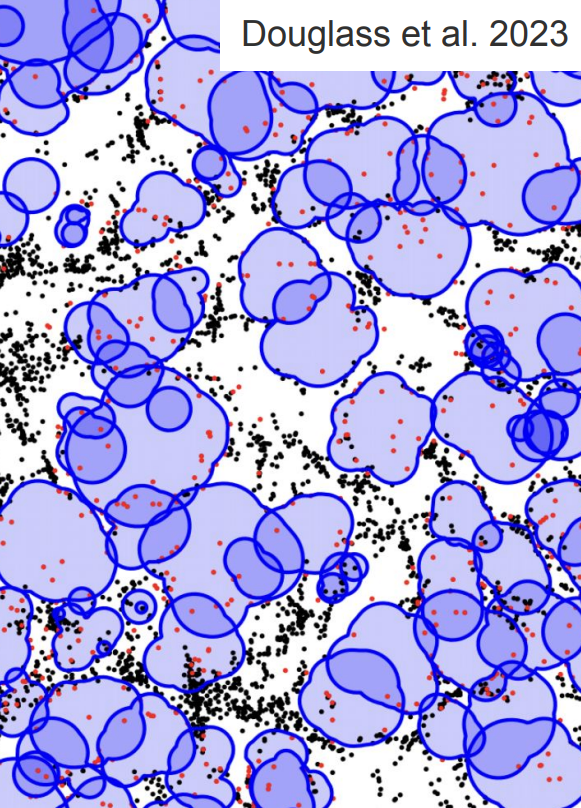
Cosmic voids are huge, three-dimensional bubblelike structures in space that, as their name implies, are relatively devoid of galaxies. By volume, these voids take up roughly 50 percent of the universe. But they contain less than 20 percent of all the galaxies in the cosmos, meaning galaxies that do live in voids don’t have many neighbors compared to their counterparts, which tend to group together into filaments or walls through space.
There are many ways to spot light from the disk around a feeding supermassive black hole. Previous surveys looking at void galaxies used one of two methods, either looking for spectral “fingerprints” in their light at optical wavelengths or examining their colors in the mid-infrared (mid-IR). In the latter case, astronomers generally use a color cutoff method — galaxies whose mid-IR light is bluer than the cutoff are characterized by a lot of star formation, while those whose light is particularly red show signs of a feeding supermassive black hole.
But void galaxies tend to have high rates of star formation and thus bluer light, which could mask signs of a growing black hole within. So Aradhey used a third method: examining mid-IR light from a galaxy for changes over time, using a survey of 290,000 galaxies observed with NASA’s Wide-field Infrared Survey Explorer (WISE) telescope over a period of 8.4 years. Such variations in light from a galaxy can also indicate AGN activity, possibly due to natural fluctuations in the amount, type, or temperature of infalling material in the accretion disk.
Using this method, Aradhey identified 20,000 AGN that were missed by other surveys, including 7 percent of galaxies that didn’t make the “traditional” mid-IR color cut. These galaxies had mid-IR colors so blue that astronomers using the color method would have missed signs of their accreting black holes because the galaxies’ color is dominated by star formation.
Aradhey further found that over time, a galaxy’s overall mid-IR color changes. So, while a galaxy might at some times make the color cutoff to be identified as hosting a hungry supermassive black hole, at other times it appears more like a normal, star-forming galaxy and its black hole will be overlooked. In an example case, Aradhey showed that a particular galaxy spent only 18 percent of its time with mid-IR colors indicating an AGN, while the other 82 percent of the time, it would be missed in most surveys as a normal, star-forming galaxy.
“We need variability to catch snacking supermassive black holes like these,” he said.
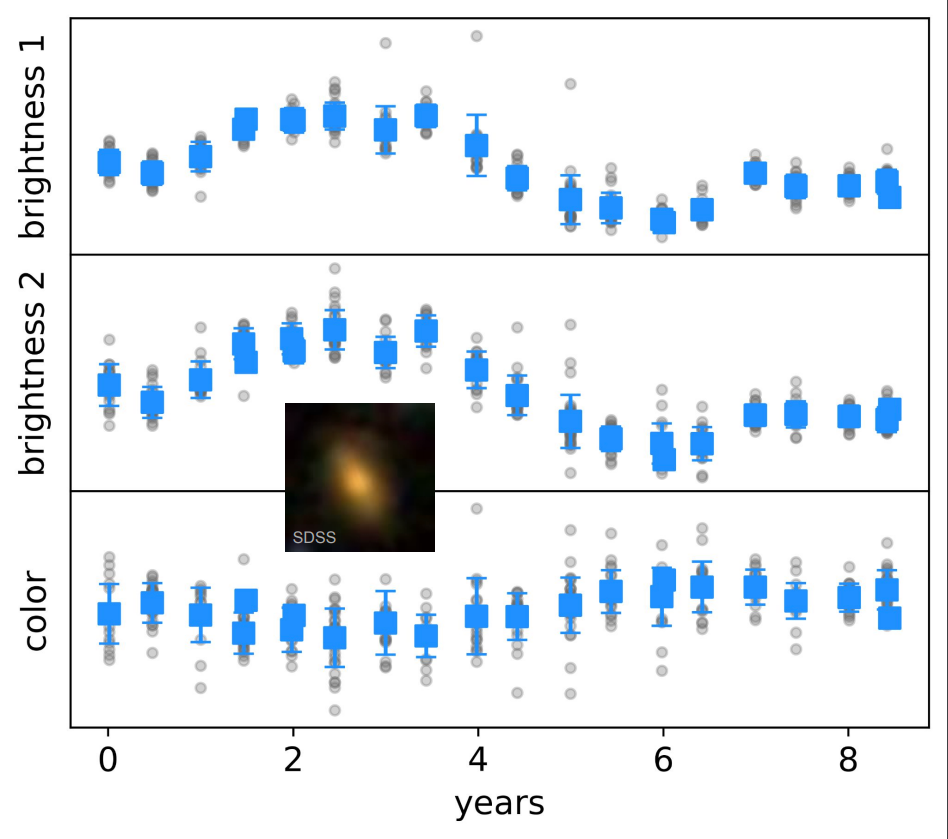
Size matters
And what about the role environment and interactions play on those snacking black holes? Aradhey discovered that AGN are more common in voids than denser regions — provided those AGN are in midsize or smaller dwarf galaxies. Among larger galaxies, the trend reversed, he said, to reflect what astronomers generally expect, with more galaxies hosting feeding black holes in denser regions where interactions are more common than in voids.
“These finding indicate that interactions between galaxies, which occur more frequently in those denser regions and do not occur very frequently in the empty void regions, encourage the supermassive black holes at the centers of those galaxies to snack, but that only applies among larger and more luminous galaxies,” he concluded. Something else is going on in voids, because “the smaller galaxies seem to snack more effectively, if you will, if they’re left alone and don’t interact with their neighbors.”
Although the reason for more AGN in smaller galaxies within the voids isn’t clear, he said one possibility is that these galaxies may be more able to channel fuel toward a supermassive black hole because they don’t have to compete for that fuel with nearby neighbors through interactions or other processes that might strip away a galaxy’s gas and dust, which are common in denser regions. More work is needed to look at the characteristics of these growing black holes and the galaxies hosting them — and their environment — to determine how such factors influence each other.
Multiple methods
Such studies underscore the value of long-term and multi-wavelength observing, highlighting how taking a multi-pronged approach to identifying AGN can reveal growing black holes that just one or two methods of identification might miss. “Failure to detect actively accreting supermassive black holes may really not be due to their rarity, but to the method by which astronomers are trying to hunt for them,” said Shobita Satyapal of George Mason University, whose own work looking in multiple wavelengths for feeding black holes formed a foundation for Aradhey’s study, in a press release.
And because supermassive black holes play such a vital role in the development of all galaxies throughout our universe, it’s important to identify and characterize all of them, not just those that are easiest to find.
Aradhey completed the study with Anca Constantin at James Madison University, also in Harrisonburg, Virginia.







